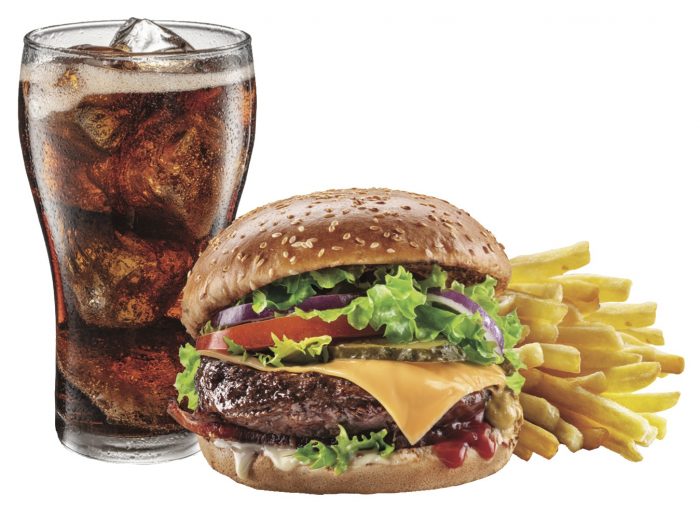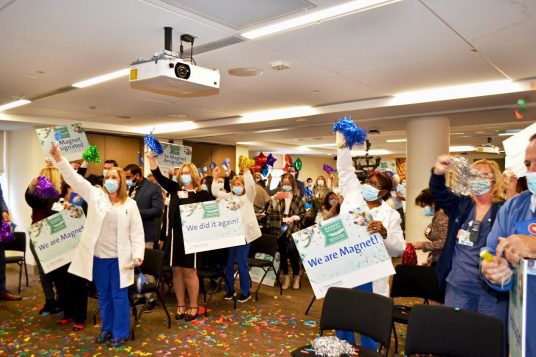After a November and December in which realities like a “tridemic” of viral threats sickened residents throughout Suffolk County, the new year has started off with fewer illnesses and cautious optimism among health care professionals.
“The numbers are coming down now,” said Dr. Sharon Nachman, chief of the Division of Pediatric Infectious Diseases at Stony Brook Children’s Hospital. The overall threat is “less” and “we’re in the take-a-deep-breath phase.”
Indeed, the frequency of cases of several viruses is lower.
“Flu and RSV (respiratory syncytial virus) are down,” Dr. Adrian Popp, chair of Infection Control at Huntington Hospital/Northwell Health and associate professor of medicine at Hofstra School of Medicine, explained in an email.
At the Catholic Health hospitals, including Port Jefferson-based St. Charles and Smithtown-based St. Catherine of Siena Hospital, the emergency room visits are down around 10% from a few weeks ago, said Dr. Jeffrey Wheeler, medical director of the Emergency Department at St. Charles.
In between too busy and too quiet, the hospital is in the “sweet spot” where health care providers have enough to do without frantically racing from one emergency to another, Wheeler said.
Among those visiting St. Charles, Wheeler added that health care providers are seeing a smattering of illnesses.
At the same time, the vaccine for the flu has proven to be a “good match” for the current strain, Nachman said. “Amongst those who did the flu shot, they have tended to not get sick enough to go to the doctor.”
According to New York State Department of Health figures, the overall numbers across the state have been declining for the flu. For the week ending Jan. 14, the number of infections was cut in half.
Suffolk County saw a slightly larger drop, falling 59% for the same week, to 571.
This year, people who were going to get the flu vaccine may have helped themselves and their families by getting the shot earlier, rather than dragging out the process of boosting their immune systems over the course of months. Nachman said.
Cases of monkeypox continue to be on the lower side, in part because of the number of vaccines people in the area have received.
To be sure, health care workers are still helping people overcome a range of infections circulating in the county.
“We are still seeing a smorgasbord of flu, COVID and RSV,” said Nachman. Of the people admitted to Stony Brook Hospital, most of them have a comorbidity.
At Huntington Hospital, admissions are “high,” and the hospital census remains high, Popp added.
Health care workers are diagnosing viruses like the flu and COVID-19 and have used available treatments to reduce the symptoms and the spread of these viruses.
New COVID vaccine approach
Earlier this week, the Food and Drug Administration posted documents online that reflected a possible future change in its approach to COVID-19 vaccinations.
Instead of recommending bivalent boosters or a range of ongoing vaccinations to provide protection against circulating strains, the FDA plans to approach COVID-19 vaccinations in the same way as the flu.
Each year, people who are otherwise healthy and may not have high risks may get a single dose of a vaccine based on the strains the administration anticipates may circulate, particularly during the colder winter months.
Health care professionals welcomed this approach.
Nachman and Popp thought a single shot would be “great” and appreciated how the annual vaccine would simplify the process while reducing inoculation fatigue.
“The simplest messages with the simplest strategy often wins,” Nachman said.
Bivalent booster concern
Addressing concerns raised by the Centers for Disease Control and Prevention about a potential link between the bivalent booster and stroke, Nachman suggested that was one data point among many.
Israel has used the Pfizer bivalent booster exclusively and hasn’t seen any such evidence linking the booster to stroke.
The CDC data is “one of multiple data points that we use to look at safety events,” she said. “Not a single other one has shown any relationship with stroke among the elderly in the first 21 days.”


















